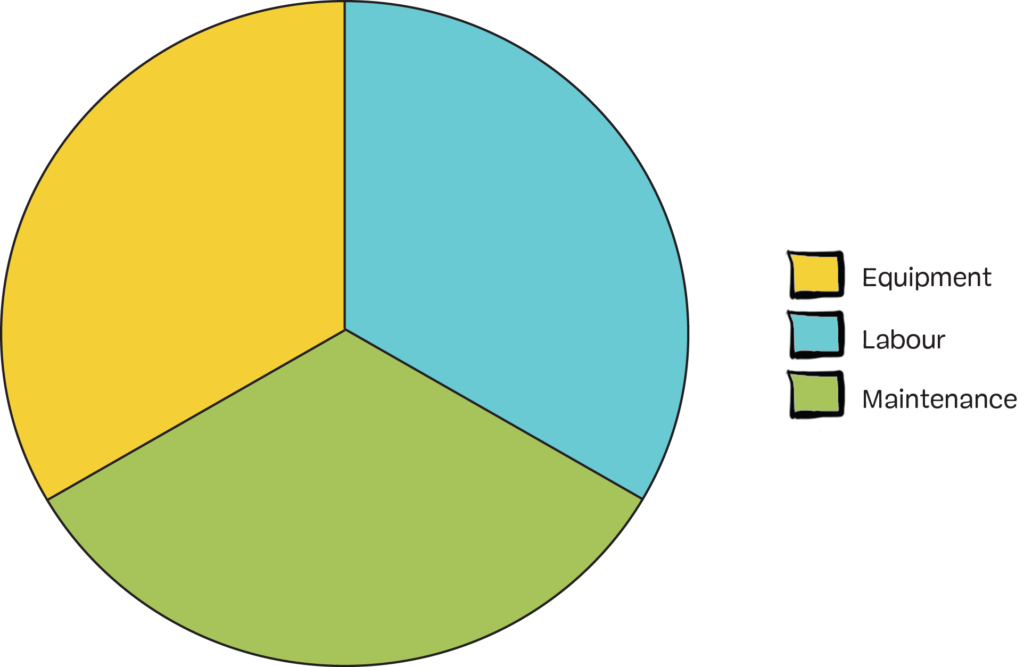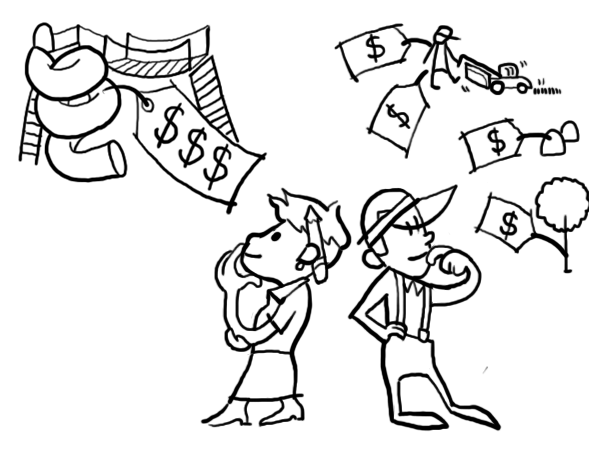Money Matters
Another important thing to consider as you move into a more refined version of the design is cost.
Costing your project involves considering a number of factors, including material costs, wage rates, and existing site conditions. In addition, the scale of the project will determine the overall cost. This is a complex process, and the design professional you are working with can help to guide you through it. It is important to keep in mind that prior to construction the overall cost is an estimate that should closely reflect what the final cost of the project is. Always include a contingency.
Key Considerations:
- What is the scale of the project? A smaller scale project will invariably be less expensive
- What elements will be included and how will they affect cost?
- What types of ground surfacing will you need, and what quantity?
- Is it possible to recycle elements from the old school or school grounds (for example, using rubble from a demolished building to construct mounds)?
- How much formwork and poured concrete will be needed to construct curbs, walls, stairs, and ramps?
- What equipment needs exist? Will any existing equipment be retained and repurposed?
- What types of planting will be included? Is irrigation needed?
- What are furniture and lighting needs? Can you turn furniture such as benches into a fundraising opportunity?
- What types of green infrastructure will be implemented? Consider that green infrastructure may reduce long term costs
- How much site preparation needs to be done (labour costs for grading and excavation)?
- How much will the installation and construction cost (labour costs)?
- What will the consulting and design fees cost?
- Have you included a contingency? 15% is recommended
The following graph gives you a rough idea of how costs typically break down proportionally for a playground project, with the exception of consulting and design fees. Note that play equipment is usually the most expensive item of all, but buying the equipment is far from the total cost. What is not shown in the graph below are any items that may be covered by the school if they are related to capital construction projects. This will be determined on a case by case basis.

Real Life Examples
A great example of a small scale project is at Brock Elementary School in Vancouver. This playscapes blog entry details the project costs, although it is worth noting that it does not include planning, project management, or design costs. This project, completed for under $10,000, gives you a sense of what can be accomplished even with a small budget.
The TD Building Outdoor Classrooms guide also features some appendixes that cover budgeting and provide sample project costs.
The Vancouver School Board provides useful numbers for budgeting for school gardens in the Vancouver Board of Education (VBE) School Garden Policy.
Materials
To keep the project on budget, consider where to splurge on materials, and where using the cheaper material is a better option. In many cases, the materials you select can drastically alter the cost for specific elements. For example, consider your different options for safety surfacing:

When doing cost comparison, make sure you are aware of all the pertinent factors. For example, while wood chips or bark mulch is a very inexpensive item, it lacks the longevity of a poured rubber surface. That being said, you may want to install bark mulch as a temporary solution and install a pricier surface during a later phase.
Check In: Are you on Budget?
Once you have estimated the cost of your project, it’s time to revisit fundraising efforts and look at your overall budget. If you have a shortfall, now is the time to figure out how you will make it up. What additional fundraising ideas can you implement at this stage? Consider if there are any elements that you can secure through donations, or if any in-kind donations are possible.
